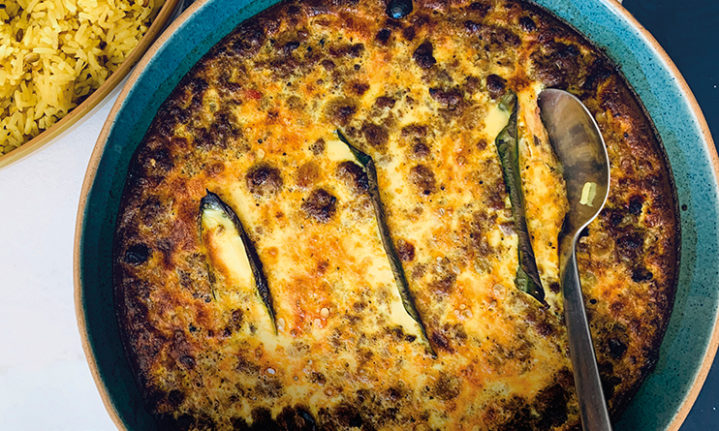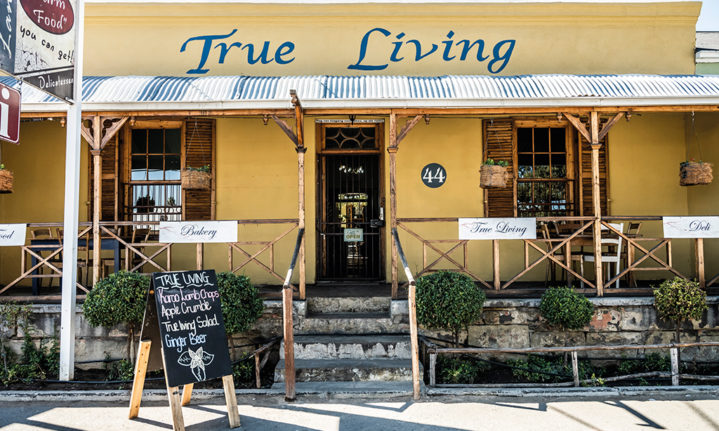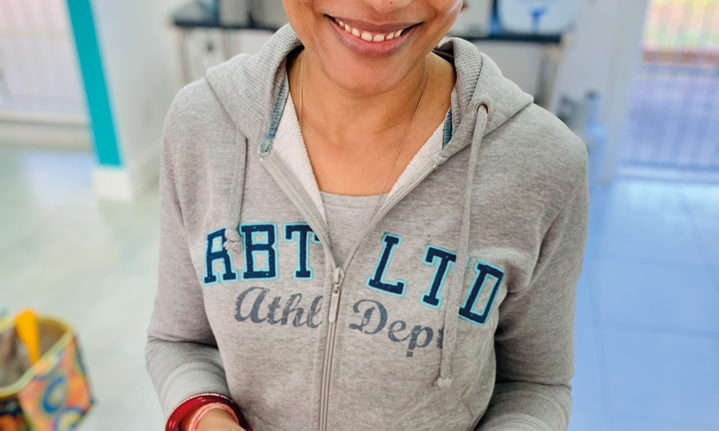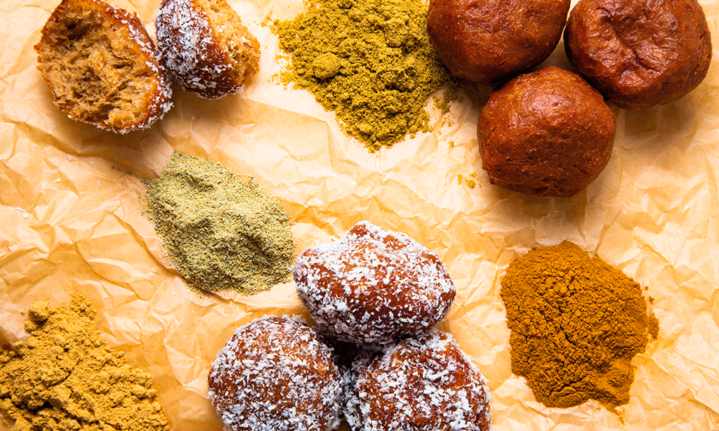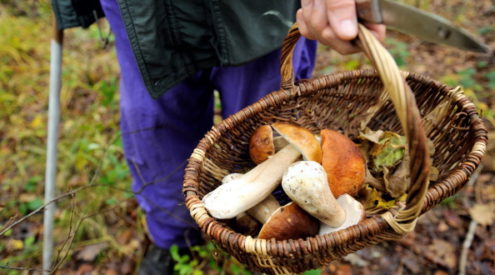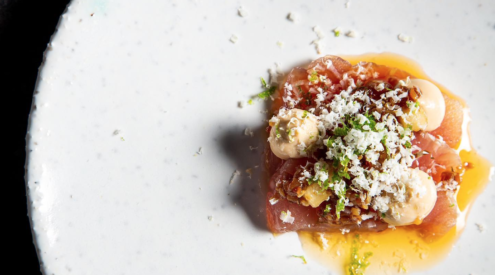Spice, in South Africa, is a subtle but loaded spoon connecting our different culinary heritages. The coriander in boerewors nods to a French affair while the Malay curry cardamom reminds us of Indonesia. Louzel Lombard Steyn looks into our culinary DNA and the tastes that are our most iconic
Words: Louzel Lombard Steyn | Photographs: Louzel Lombard Steyn, Ashleigh Frans, John Hafner, Spice Emporium
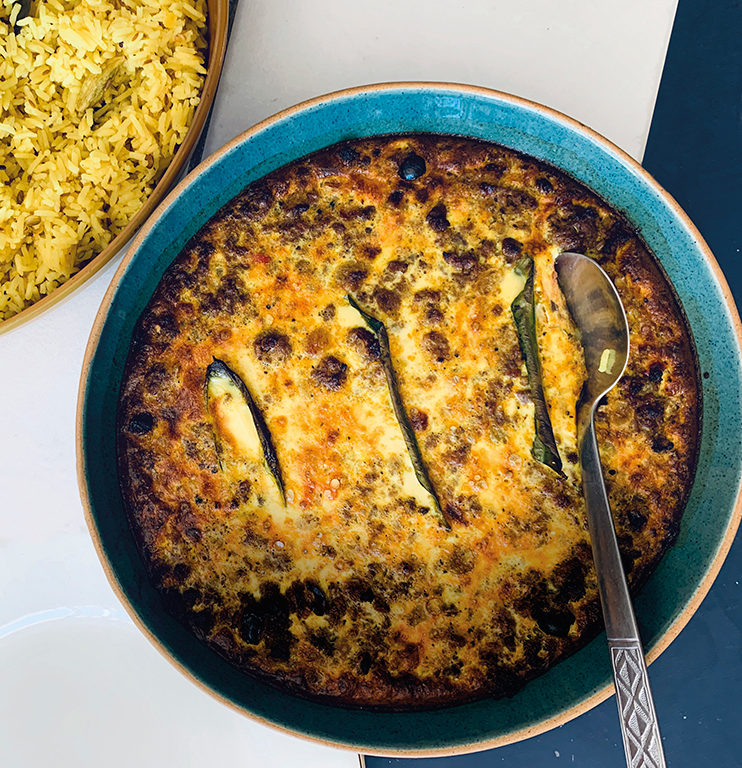
Traditional bobotie is served with yellow rice at True Living in Cradock.
Burnt is a flavour – although there are limits to how far you can push a tray of coriander seeds before that saying goes up in smoke…
I learnt this the hard way last winter when my mom and I made our own selection of gourmet boerewors. Traditional. Bobotie-style. One with thyme and smoked salt, and one with extra pork fat and fennel.
It was going to be the best boerewors we had ever tasted… but we forgot our tray of precious, hand-harvested coriander seeds in the oven and blackened the bulk of it.
Boerewors can be flavoured with a whole spectrum of spices but it must never be without the iconic crunch of toasted coriander seeds. It’s what makes boerewors Boerewors. So, we had to make do. ‘Burnt is a flavour,’ I recall my mother saying as we added the ashy seeds to our spice mix and ground together the whole lot. ‘It’ll be smoking haute cuisine…’
It was not the first time we mucked up a year’s supply of boerewors. A couple of winters back, in another bout of inspired creativity, we accidentally swapped the ratios for cumin and coriander seeds and ended up with roughly 30kgs worth of falafel boerewors. The family was not impressed.

Spice tells a story. A taste of cumin can transport you to the Middle East as instantly as the crunch of a coriander seed lands you in the Karoo, mid-winter. Milktart would be but a bland crème pâté without a sprinkling of cinnamon, just as a South African potato bake would just be another pretentious dauphinoise without that bright-yellow layer of spicy Aromat.
In essence, spice has elevated South Africa’s many borrowed recipes to lekker local status.
It wasn’t always as colourful. Modern spices such as cardamom, cumin and turmeric were introduced to indigenous cooking only when the trade ships started mooring in the Cape, exchanging the bright flavours of faraway lands for fresh food grown here. It wasn’t long before new recipes emerged, but at a cost. Tales of how exiled Malaysian revolutionaries along the West Coast and indentured labourers from India along the East Coast tried to conjure up flavours of home while enslaved in South Africa are heart-breaking indeed.
Ultimately, however, at least for our culinary heritage, these are stories with happy endings that brought us delicious Durban curry. And sosaties – from satay. And South Africa’s unofficial national dish, bobotie – derived from bobotok. And, of course, boerewors, which combines our French and German influence with good South African meat to produce one continuous coil of pure South African flavour.
I love the ‘melting pot’ metaphor but it must never overshadow the country’s endemic spice repertoire. Still, the most original seasonings in South African cuisine are so ingrained that they are often overlooked. In the Karoo, for example, the kapokbos scrub – also known as wild rosemary – with its characteristic little cotton ball tufts, isn’t used in cooking, per se. It’s a favourite food of sheep in the region and, ultimately, one of the distinctive aromatics that give Karoo lamb its unique flavour. ‘Spiced on the hoof,’ as the farmers in those parts have coined it.
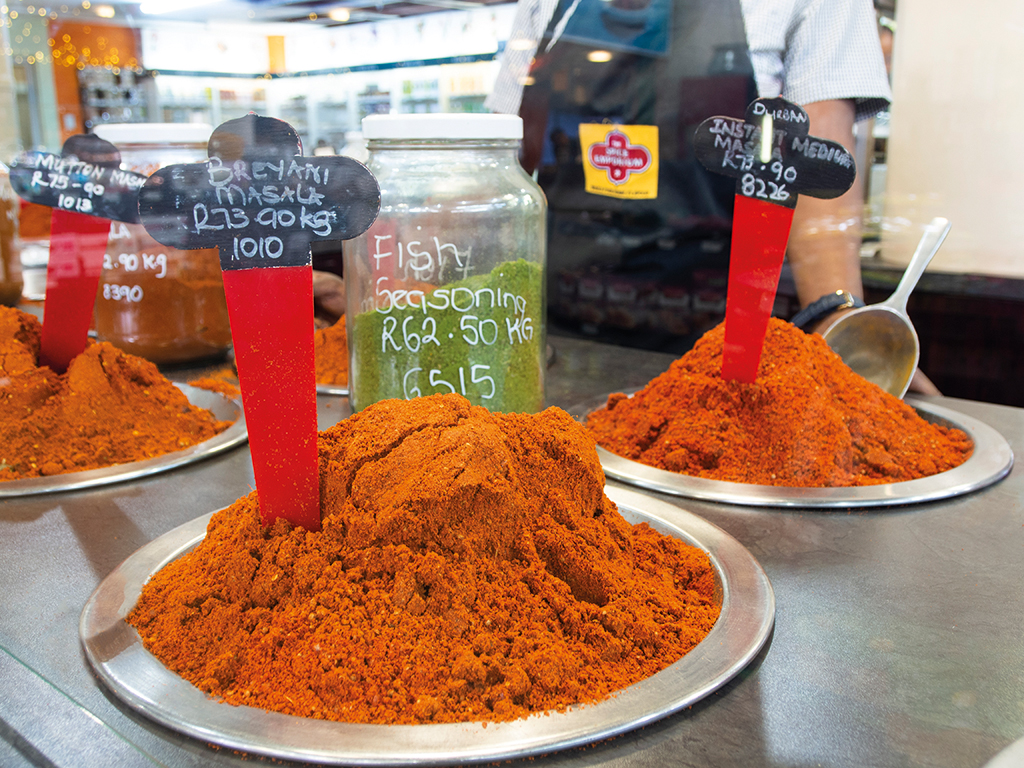
The Spice Emporium is on Monty Naicker Road, Durban.
Rooibos, similarly, has too long been confined to the tea aisle and overlooked as a fragrant spice for desserts and marinades. Only recently have foodies started recognising the value of – and venturing back to flavours of – fynbos, kambro and buchu, and for the first time, we’re valuing these elements as spices that can rival any other global cuisine.
“Spice” refers to a collection of seeds, roots, bark and flowers of fragrant edible plants that are typically dried in order to preserve and extract their natural oils. Herbs refer to the raw or fresh ingredients, like the prelude to the spice. In both instances, it’s the oils that carry the flavour; the essence of spice. They can easily go rancid if stored for too long or burn when heated too high. ‘Burnt is a flavour,’ you might think… but not for spice. That’s a lesson I’ll be eating my way through for the next year…
You don’t have to, luckily. Rather visit these fine establishments to get a real taste of South African spice.
Karoo spice
The obvious place to experience that iconic flavour profile of Karoo lamb is certainly the Karoo heartland, where True Living Bakery & Farm Deli has been cooking up local fare for the past eight years. It’s my favourite Karoo spot because it belongs to my mom, Lani. (Rest assured, our scorched boerewors is not on the menu). You’ll find only true Karoo food here, everything from the farm to the table. Think Karoo lamb sosaties made according to our family recipe, and bobotie served either traditionally with yellow rice or in spring rolls with homemade aniseed-spiked chutney. The milktart spring rolls are also a must-try; mom’s modern take on the old-fashioned favourite.
Where: True Living, 44 JA Calata Street, Cradock, Eastern Cape
072 039 6331, truelivingshop.com
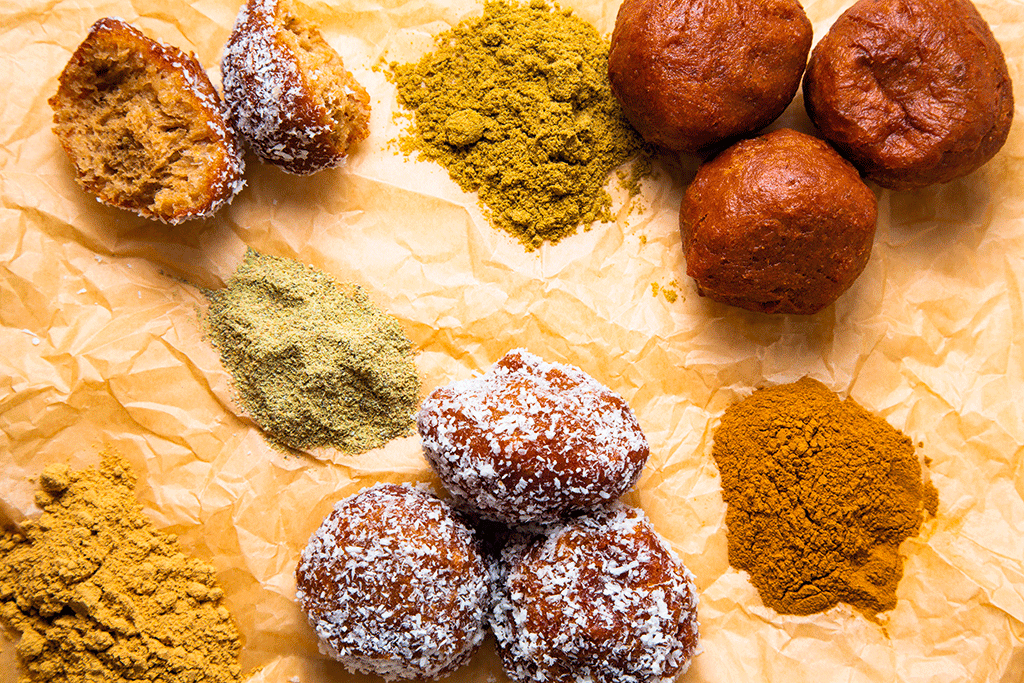
These are the spices that made the Cape Malay Sunday speciality – the koesister – famous.
From India with love
Durban is known as the world’s largest Indian city outside India, so it’s only natural that a slice of authentic Indian flavour heaven can be found here. The Harie family with its rich, 101-year-old legacy in the spice industry is the force behind The Spice Emporium’s success, which has grown from strength to strength over the past 33 years. The shop is adored by foodies across the country for its amazing masalas, and no self-respecting cook would ever leave Durban without swinging by Monty Naicker Road first. Nowadays, thankfully, the online shop ships those iconic spices straight into your kitchen. The Spice Emporium’s equally famous Snack Bar inside the shop offers Indian street food, aka ‘chaat’, but is closed during the pandemic, unfortunately.
Where: 31 Monty Naicker Road, Durban, KwaZulu-Natal
031 332 5888, spiceemporium.co.za
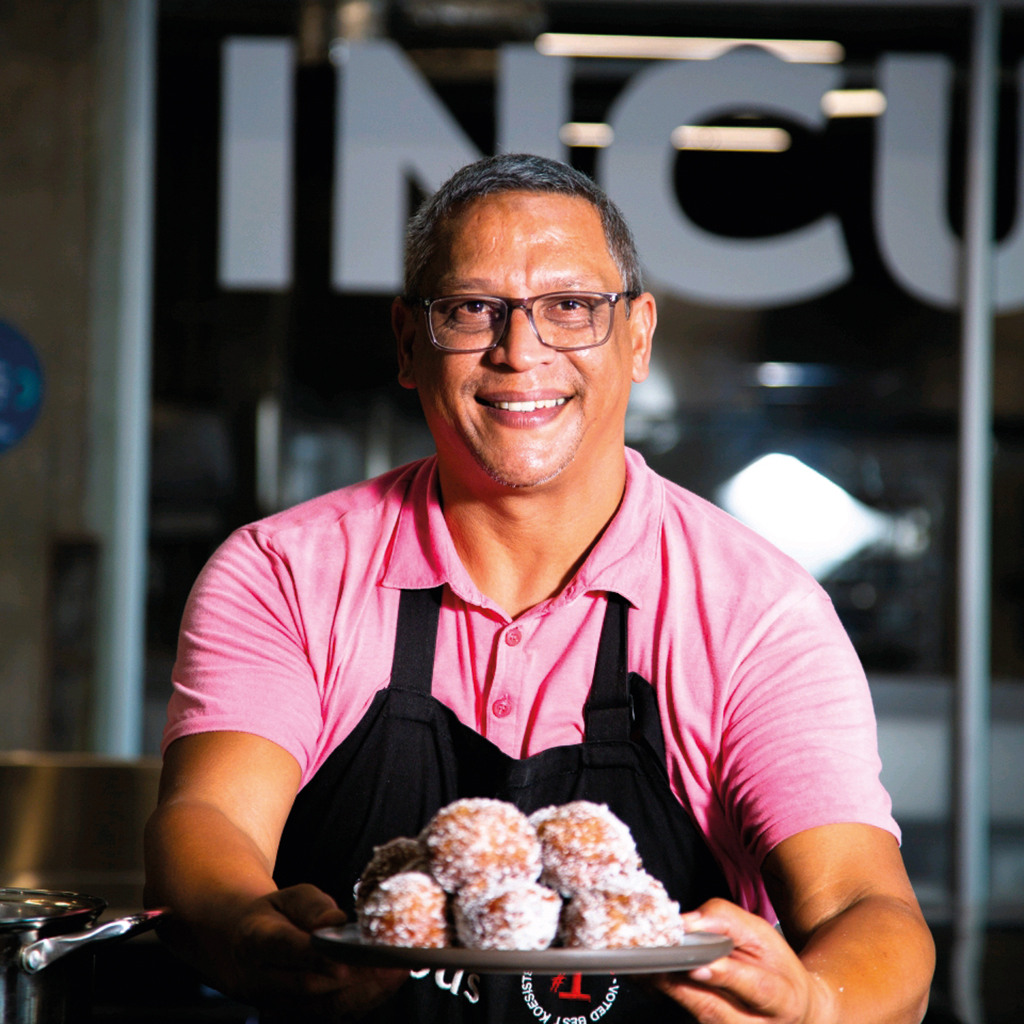
Fuzzy presents his World Koesister Competition winning fare.
Koebrother
There’s a rooster in the hen pen of the classic Cape Malay koesister, but no one is complaining. Faieez Alexander aka Fuzzy was the 2020 winner of the World Koesister Competition – launched by the lyrically lipped Kaaps culture advocates, VanniKaap. He calls himself the ‘koebrother’ and can wax lyrical about these syrup-dipped and deep-fried bites of goodness. ‘Just smelling that aniseed, ginger, cinnamon and warm sugar water-coated koesister drizzled with coconut is the ultimate.’ Fuzzy started his koesister business, Fuzzy’s Koesisters, shortly after the lockdown and has since secured a spot at the new Makers Landing at Cape Town’s V&A Waterfront. The vibey space is part of the cruise terminal at the harbour and houses various food traders, all celebrating SA’s diverse food culture under one roof.
Where: Makers Landing, The Cruise Terminal, Victoria & Alfred Waterfront, Cape Town, Western Cape
079 580 0301
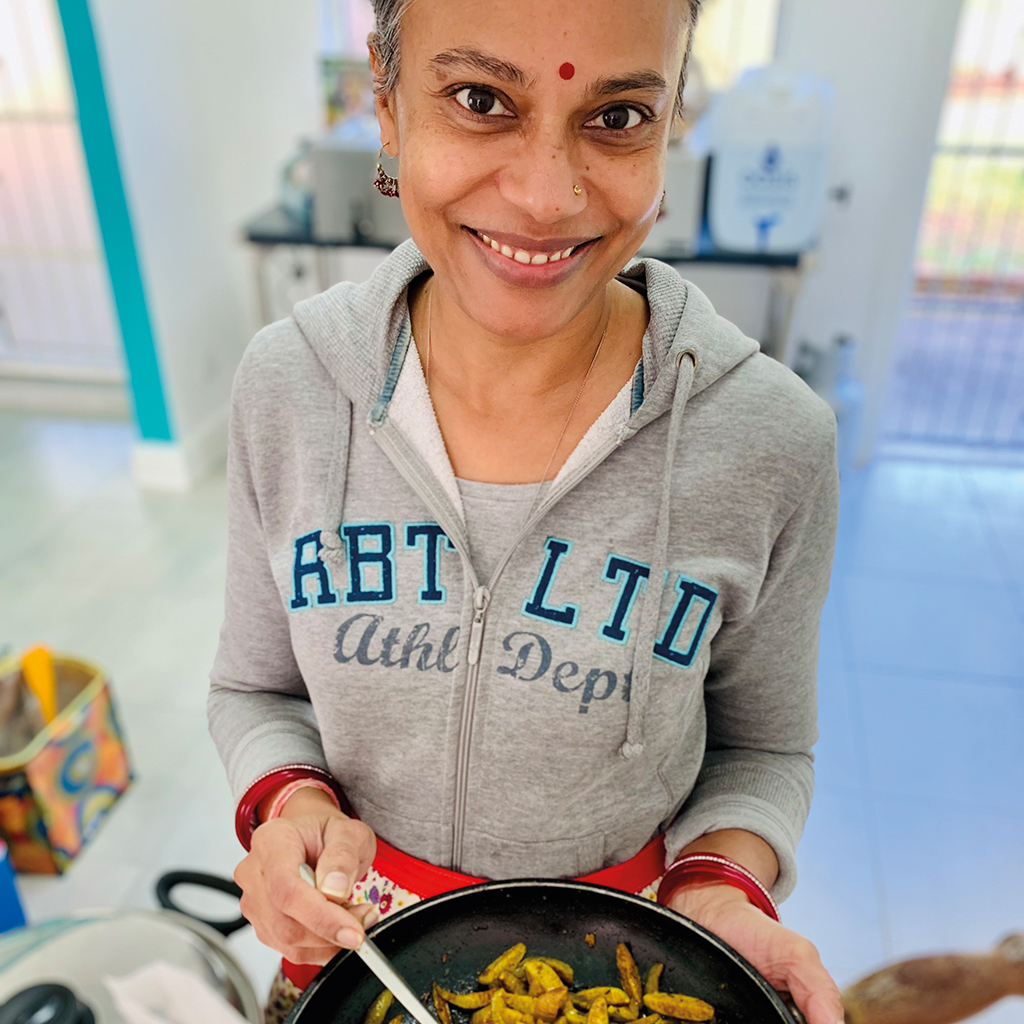
Mix it up with Anusha Ranchhod at the Masala Box in Gqeberha.

Tantalizing dishes are on offer at the Masala Box in Qgeberha.
Masala Magic
From Gujarat to Gqeberha: there’s a slice of India being cooked up in the Friendly City from the kitchen of Anusha Ranchhod, who recently opened a small spice and grocery shop in the city. She also offers the most flavourful and authentic takeaway meals and her vegetarian dishes, especially, are mind-blowing; an ode to Anusha’s home state of Gujarat. Exotic veggies such as tindora, aka ivy gourd, and okra often feature, stirred up in the shop kitchen with the perfect blend of spices from the adjoining spice store. Combining a grocery store and a restaurant, incidentally, might be the best thing since chilli spiced green mango on a stick – but prepare to bulk up on all the masalas. Anusha is always around to help with special blends, give recipe advice or just share her love for the freshest ingredients and great food.
Where: 266 Main Road, Walmer, Qgegerha, Eastern Cape
082 608 0227
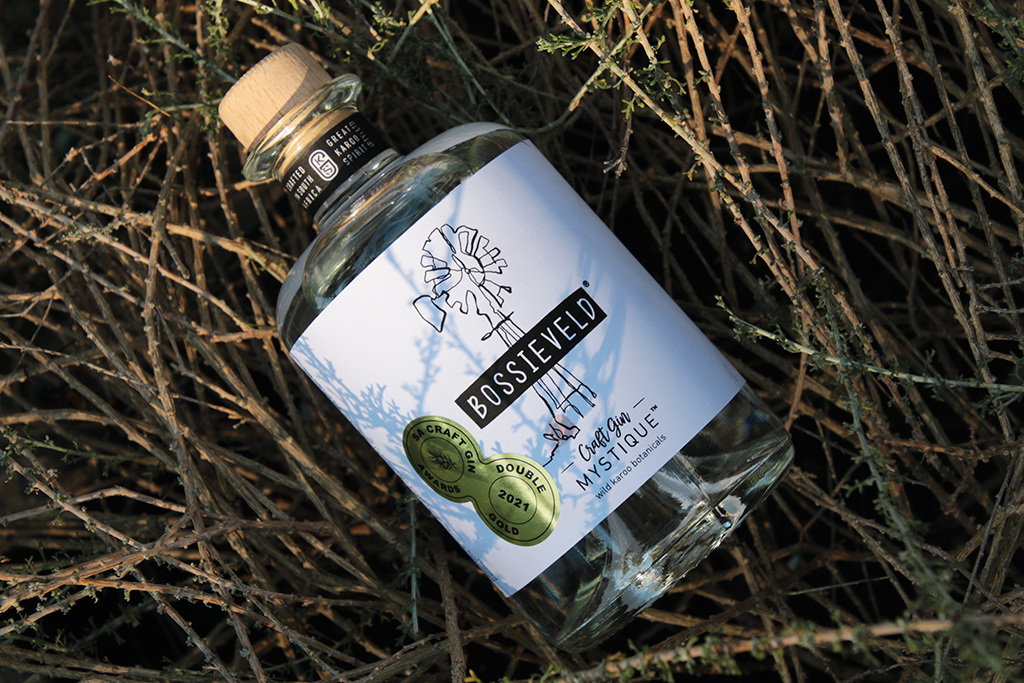
Bossieveld Mystique… The Karoobossie in the background is one of the well-known Pentzia species on which Karoo sheep love to graze.
On the rocks
South Africa’s fynbos-infused gins are all the rage for all the right reasons – but have you tried the wild Karoo gin? Bossieveld Craft Gins are infused with natural occurring wild Karoo botanicals, aka Karoobossies, revealing a kaleidoscope of aromas and tastes found only in this special, arid landscape. Karoobossies have been used for more than 100 000 years as medicine by the original Khoi and San inhabitants but have been overlooked in modern times. More recently, but long before craft gins became a worldwide trend, founder Ian Goss-Ross (an engineer), and his business partner (a native pharmacist) began researching the unique properties of the bossies. They haven’t looked back since, and neither will you. Order online.









